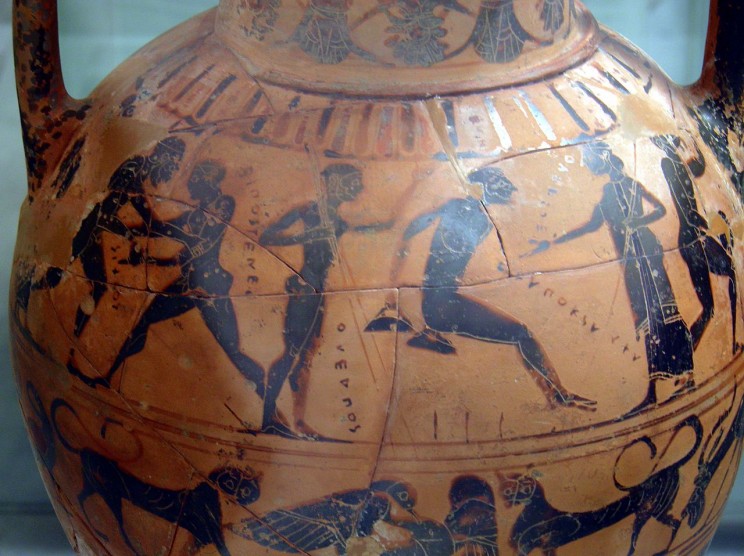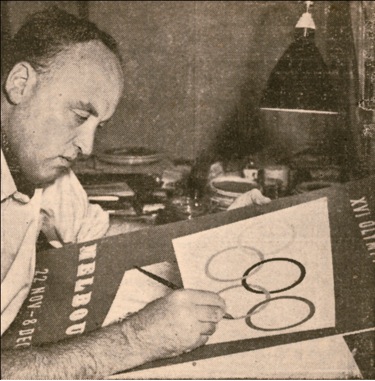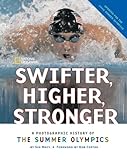On this closing weekend of the Summer Olympics, I FINALLY get around to posting my strip from 8.10.16! A little here and there and everywhere of late with the last few weeks of summer break. Back on a regular schedule as we head into fall. Enjoy!
Viewing: Blog Posts Tagged with: Olympic Games, Most Recent at Top [Help]
Results 1 - 16 of 16
Blog: E is for Erik (Login to Add to MyJacketFlap)
JacketFlap tags: olympic games, Harts Pass, Add a tag
Blog: Monica Gupta (Login to Add to MyJacketFlap)
JacketFlap tags: साक्षी मलिक, aditi ashok golf, FU YUHANHUI, Olympic games rio 2016, Rio Olympics2016, खिलाडी और आत्मविश्वास, दीपा कर्माकर, महिलाएं - खेल, वीपी सिंधु, China, Cartoons, Articles, Olympic Games, Rio Olympics, 2016, Add a tag
महिलाएं – खेल, खिलाडी और आत्मविश्वास Rio Olympic 2016, रियो ओलम्पिक 2016 में भारत की महिलाओं का ही बोल बाला रहा … जहां एक बार भारतीयों ने पदक की आस छोड दी थी वहीं साक्षी मलिक और पीवी सिंधु एक उम्मीद बन कर आईं और दीपा कर्माकर ने जिस तरह से महिला जिमनास्ट में चौथा […]
The post महिलाएं – खेल, खिलाडी और आत्मविश्वास appeared first on Monica Gupta.
Add a CommentBlog: OUPblog (Login to Add to MyJacketFlap)
JacketFlap tags: Ancient Olympics, 200 Meter Butterfly, great athletes, Olympic champions, pankration, The Victor's Crown, Books, History, Michael Phelps, Olympic Games, *Featured, ancient greek, Classics & Archaeology, David Potter, Olympic Gold Medal, Sports & Games, greek sport, Add a tag
As Michael Phelps pulled away from the field in the 200 IM to win his thirteenth individual Olympic Gold Medal, he set the standard by which athletic greatness will be measured. The greatest athletes are not just good at one thing—the measurement of true greatness, established from antiquity to the present, is the ability to dominate different events, and the ability to do so more than once.
The post Measuring athletic greatness appeared first on OUPblog.
Blog: OUPblog (Login to Add to MyJacketFlap)
JacketFlap tags: oxford classical dictionary online, Michael Phelps, *Featured, Classics & Archaeology, gold medals, Online products, Quizzes & Polls, Sports & Games, Arts & Humanities, ancient greek athletics, Ancient Olympics, ancient Olympics events, ancient Olympics facts, greek olympics history, olympia greece, Olympic Games, Olympians, usain bolt, Add a tag
Since the very beginning of the games at Olympia, the event has served to strengthen unity, bring peace, and celebrate individuals for achieving greatness after endless hours of hard work. The Olympics have always been a source of inspiration and a connection to our own humanity.
The post How much do you know about the origins of the Olympics? [quiz] appeared first on OUPblog.
Blog: OUPblog (Login to Add to MyJacketFlap)
JacketFlap tags: sport, History, olympics, World, Brazil, nazi germany, Hitler, VSI, Very Short Introductions, IOC, Olympic Games, 2016 Olympics, *Featured, Ancient Greeks, Jesse Owens, Sports & Games, Sport: A Very Short Introduction, international olympic committee, Mike Cronin, modern Olympic games, Olympism, Pierre de Coubertin, Add a tag
Enjoying Rio 2016? This extract from Sport: A Very Short Introduction by Mike Cronin gives a history of the modern Olympic games; from its inspiration in the British Public school system, to the role it played in promoting Nazi propaganda. The modern Olympic Games, and their governing body, the International Olympic Committee (IOC), came into being in 1894 and were the brainchild of Pierre de Coubertin. A Frenchman with a passionate interest in education, de Coubertin had visited England.
The post Facing the Führer: Jesse Owens and the history of the modern Olympic games appeared first on OUPblog.
Blog: OUPblog (Login to Add to MyJacketFlap)
JacketFlap tags: rio olympics, *Featured, Science & Medicine, Online products, Sports & Games, Arts & Humanities, oxford online, 2016 rio olympics, A Dictionary of Sports Studies, Facts about sport, list of facts, Olympics facts, sport facts, sports, Olympic Games, Summer Olympics, Oxford Reference, Add a tag
Every four years, when the Olympics come around, everyone suddenly becomes an expert in one, many, or all of the sports on show. Whilst you watch you know exactly when an athlete goes wrong with their run-up, or when a horse steps out of line in the Dressage, or how a tennis player could better their serve.
The post Ten interesting facts about a selection of Olympic sports appeared first on OUPblog.
Blog: OUPblog (Login to Add to MyJacketFlap)
JacketFlap tags: rio olympics, *Featured, Science & Medicine, Online products, Sports & Games, Arts & Humanities, oxford online, 2016 rio olympics, A Dictionary of Sports Studies, Facts about sport, list of facts, Olympics facts, sport facts, sports, Olympic Games, Summer Olympics, Oxford Reference, Add a tag
Every four years, when the Olympics come around, everyone suddenly becomes an expert in one, many, or all of the sports on show. Whilst you watch you know exactly when an athlete goes wrong with their run-up, or when a horse steps out of line in the Dressage, or how a tennis player could better their serve.
The post Ten interesting facts about a selection of Olympic sports appeared first on OUPblog.
Blog: OUPblog (Login to Add to MyJacketFlap)
JacketFlap tags: Journals, steroids, Olympic Games, Lance Armstrong, sports medicine, *Featured, Science & Medicine, Health & Medicine, doping, pharmacology, Sports & Games, BJA Education, performance-enhancing drugs, 2016 rio olympics, blood doping, Erythropoietin, Goldman's Dilemma, Manupriya Sharma, Maria Sharapova, PEDs, xenon, Add a tag
Performance-enhancing drugs (PEDs) are drugs that improve active performance in humans, known colloquially in sports as 'doping'. Perhaps the most famous abuser of PEDs to date is Lance Armstrong, a seven-time Tour de France champion, who in 2013 confessed to using performance-enhancing drugs during his cycling career, and was stripped of the seven Tour de France titles he won from 1999 to 2005.
The post How do performance-enhancing drugs affect athletes? appeared first on OUPblog.
Blog: OUPblog (Login to Add to MyJacketFlap)
JacketFlap tags: sport, History, sports, olympics, Europe, Olympic Games, gender gap, machismo, Mixed Martial Arts, Sports & Games, Thomas F. Scanlon, Gina Carano, Books, ancient games, ancient greek athletics, Ancient Sport, MMA, Roman gladiator, Ronda Rousey, Sport in the Greek and Roman Worlds, Ultimate Fighting Championships, violent sport, *Featured, Classics & Archaeology, Arts & Humanities, Add a tag
Violent sports like American football, ice hockey, rugby, boxing and mixed martial arts are perennially among the most popular. Their status is a frightening indication of the flowering of violence in sports in the 21st century, booming to a level unknown since ancient Greece and Rome. In the ancient Mediterranean, the audiences both in the Greek East and in the Roman West mutually enjoyed Greek athletic contests and Roman spectacles.
The post Violent sports: the “most perfect of contests”? appeared first on OUPblog.
Blog: OUPblog (Login to Add to MyJacketFlap)
JacketFlap tags: Books, classics, sports, democracy, Olympic Games, Athens, *Featured, Classics & Archaeology, Sports & Games, ancient olympic games, ancient romans, greek sport, homo ludens, johan huizinga, panhellenic, playing man, roman sports, Thomas F. Scanlon, thomas scanlon, Add a tag
Playing Man (Homo Ludens), the trail-blazing work by Johan Huizinga, took sport seriously and showed how it was essential in the formation of civilizations. Adult playtime for many pre-industrial cultures served as the crucible in which conventions and boundaries were written for a culture. Actions were censured for being “beyond the pale”, a sports metaphor for being “out of bounds”.
A quasi-sacred time and space set apart for games were a microcosm for the lives of all who played and for the spectators. Sport was a place in which individual merit was the rule and performance was regulated by the terms of the event.
The Ancient Olympic Games, an invention of the 700s BCE, preceded Athenian Democracy by about 200 years, and yet those earliest Games allowed any free citizen to participate and win the supreme Panhellenic crown. Yes, probably most of the first contenders were wealthy by token of having more leisure time to train and travel to the festival.
Yet in the pre-democratic centuries, the sporting model showed that what counted was individual ability and acquired skill, not status by birth. So the era of rule by tyrants and elite families was balanced by models of egalitarian display in the stadium in footraces, wrestling, boxing, and other track and field events.
Chariot racing was of course still the exclusive domain of the wealthy, a vestige of heroic tradition, but the athletes contending mano a mano ushered in more meritocratic ways. The Greek custom of requiring athletes in track and field and combat events to participate in the nude underscored this democratic ethos, perhaps popularized among the communally oriented Spartans by 600 BCE, but soon adopted universally by all Greeks.
The double entendre in my title “playing man” is intentional, with allusion to the sense that sport has been for most of history and globally a performance by and for males. For the Greeks, athletics were for men only, with a few interesting exceptions, notably girls’ ritual races at Olympia to ask Hera for a happy marriage.
In the modern Olympics, there was no women’s marathon race until 1984, almost 90 years into the games. Even then, in 1984, only 25% of all Olympic participants were female; today it is still at less than half (45% in 2012). The first women boxing events came in 2012.

Women’s participation in sports at all venues and events has slowly improved over the last 30 years, thanks to gender equity movements as a whole. Still, males have been the participants in and the most avid audiences for competitive sports globally throughout history.
Is it tradition and culture or nature (testosterone and men’s greater muscle bulk) that has driven this trend? Scholarly disagreement continues, but the answer must include nature and culture, with nature perhaps playing a heavier role. The attempts to bring women’s sports to the fore have largely not succeeded: world viewers, broadcasters, and corporate sponsors overwhelmingly prefer male contests.
Overt displays of machismo characterized the ancient Greek contest, or agôn, whence our term agony, the pain of struggle. Combat sports of boxing and wrestling topped the popularity charts and the rewards at the festivals that gave valuable prizes.
At the Olympics, there were no second or third place prizes; only first counted, and one boxer said “give me the wreath of give me death”. Many were brutalized or killed, as is shown on vases in which blood streams from the contestants.
The Greeks were overly familiar with violence meted out by men in war on a daily basis, and so violent sport here did not inspire violence. But the association of athletes with Homeric heroes maintained the display as acceptable and even superhuman (see the funeral games of Iliad 23).
Greek sport, then, is worthy of our attention as the model in many ways for our own very different contests. Yes, the modern Olympics appropriated the Greek ones for its own very different aims. But arguably the ‘deeper’ social inheritances from the Greek men who “played” are, on the one hand, a greater egalitarianism, and on the other a heroized violence and machismo with which we all still wrestle.
The post Playing Man: some modern consequences of Ancient sport appeared first on OUPblog.
Blog: OUPblog (Login to Add to MyJacketFlap)
JacketFlap tags: design, art, fashion, olympics, graphic design, Architecture, symbols, Olympic Games, Summer Olympics, Editor's Picks, *Featured, ceremony, Art & Architecture, Arts & Leisure, london 2012, Design Histories of the Olympic Games, Jilly Traganou, Journal of Design History, modernity, Pierre De Couberti, Wolff Olins, Add a tag
By Jilly Traganou
After attending the “Because” event at the Wolff Olins office on July 4th, I was once again reminded of the big disconnect that lies between designers and their public. Wolff Olins is the firm that designed the London 2012 brand, a multifaceted design campaign that included much more than the London 2012 logo. Readers may remember the numerous complaints that the logo generated. As my research revealed, this was caused partly due to International Olympic Committee (IOC)’s restrictions and the corporate unwillingness to allow for the full application of what might be seen as a “no logo” campaign.
Wolff Olins proposed an open-source framework that would integrate the public by providing a design language that could be shaped into new forms and messages. The designers’ intention was to “hand over some tools that would allow people to make everything they wanted.” Design would be “off the podium, onto the streets.” But neither the public nor the broader designers’ community were ready to accept that the Wolff Olins team showed no compliance to the usual set of corporate instruction and that what they were trying to achieve lied beyond the creation of beautiful forms.

London 2012 event. Photo by Gary Etchell. Used with permission. All rights reserved. http://www.flickr.com/photos/gary8345/557769058/
The designers’ goal was to evoke an effect similar to that of the Mexico 1968 design: a visual language designed by Lance Wyman that was not only appropriated by the counter-Olympic movement, but also marked future visual languages developed by local designers in Mexico. In a way, Wolff Olins’ design succeeded in its adaptability, even though its multiple viral deconstructed versions that appeared on the streets and online were meant to primarily express conspiracy and protest, or even a disdain for the very visual language that the designers provided (and which these “dissidents” are now using).
But why would designers today strive for openness and participation? And why should IOC, London Organising Committee of the Olympic and Paralympic Games (LOCOG), or the general public be indifferent or even hostile to these intentions? After all, are there any designs that would meet the aspirations of all stakeholders: Olympic organizers, designers, and their multiple publics? The Olympics, as indeed most public events, are complex platforms that bring to the surface deep social conflicts and generate heated debates about the notion of public good. The new temporary or permanent configurations that are designed for the Olympics express these tensions and often become the targets of opposing voices.
Everyone today recognizes that the modern Olympics only partly concern sports. Few, though, are aware of the multiplicity of the design engagements that are mobilized for their realization. Being characterized as something between urban festivals and quasi-religious events, the Olympics have a strong ceremonial character that design generates. Hundreds of designers are mobilized to create a series of objects (logos, posters, uniforms, mascots, souvenirs) that are indispensable for the Olympic ensemble. This may seem to some a contemporary distortion to the original 19th century idea of the modern Olympics’ founder, Pierre De Coubertin, but Coubertin was keenly aware of the importance of design for the identity of the Games. He designed what has been credited as the most recognizable logo in the word, the Olympic rings, and spent considerable energy in prescribing the ceremonial characteristics of the event, with writings on subjects that ranged from attention to lighting and decoration, to specifications on the architecture of the venues.

Photograph in newspaper (unspecified) of Richard Beck working on the design for the Olympic poster. This proto-version differs from the final design, particularly in its typography. Collection: Powerhouse Museum, Sydney, 92/1256–1/4. Used with permission.
As it has become only too obvious with the current case of London, in late modernity the Olympics are also an opportunity for new infrastructure projects and major real estate enterprise, which leave a debatable legacy to the host-city. Planners, architects, and urbanists play a major role in this process, as well as those who sponsor, lease, or invest in the projects in the longue durée of the post-Olympic era. The design for the Mexico 1968 Olympics had significant ideological implications for the social segregation that marked the future of Mexico City. The architecture of the Athens 2004 Olympics is emblematic of ‘instant monumentality’ and a lack of legacy planning that has characterized many modern Olympics.
At the same time, the high visibility, budget, and scale of the Olympics have provided designers with opportunities to realize ambitions that are not possible through ordinary projects, and to envision ideas that are often too advanced for their times. Katsumi Masaru for instance insisted in compiling a design manual for the Tokyo 1964 Olympic Games (a set of prescriptions that would secure the unified application of the graphics, and thus a cohesive Olympic image), even though he knew too well that it could hardly be applied in the Tokyo Olympics per se. Indeed it was completed just before the start of the Games leaving nevertheless an important legacy for all forthcoming Olympics for which a design manual became a staple. Should we similarly expect that the “no logo” idea of the London 2012, with its openness and lack of corporate compliance, is signaling a new paradigm shift?
Jilly Traganou is Associate Professor in Spatial Design Studies at the School of Art and Design History and Theory, at Parsons The New School for Design in New York. She has published widely in academic journals, has authored The Tokaido Road: Traveling and Representation in Edo and Meiji Japan (Routledge, 2003) and co-edited Travel, Space, Architecture (Ashgate, 2009). She is currently working on a new book Designing the Olympics: (post-) National Identity in the Age of Globalization. Traganou has recently edited a special issue titled “Design Histories of the Olympic Games” for the Journal of Design History, where she also serves as Reviews Editor.
The new issue of the Journal of Design History titled “Design Histories of the Olympic Games” introduces the Olympics as a multifaceted design operation that generates diverse, often conflicting, agendas. Who creates the rhetorical framework of the Olympics, and how is this expressed or reshaped by design? What kind of ambitions do designers realize through their engagement with the Olympics? What overall purposes do the Olympics and their designs serve? ‘The Design Histories of the Olympic Games’ brings together writings by a new generation of scholars that cross the boundaries between traditional disciplines and domains of knowledge. Some of the articles look at the role of Olympic design (fashion design and graphic design) in representing national identity. Other articles look at the interconnected area of architecture, urbanism and infrastructure and the permanent legacy that these leave to the host city. You can view more on the Journal of Design History’s Design Histories of the Olympic Games Pinterest board too.
Subscribe to the OUPblog via email or RSS.
Subscribe to only art and architecture articles on the OUPblog via email or RSS.
Read more blog posts about the London 2012 Summer Olympic Games.
Blog: E is for Erik (Login to Add to MyJacketFlap)
JacketFlap tags: olympic games, Harts Pass, summer 2012, Add a tag
Mega-commercialism and the Olympics. Hand-in-hand since 1984 -- or at least that's when I'm led to believe that somebody REALLY started cashing in :) When you might be crossing a line by displaying the Olympic rings (freshly made no less) in your bakery window or other such grass roots celebratory efforts, then things have probably gone too far.
And please stop showing the professional athlete "Olympic Dream" commercials. THAT is never the story here people!
Blog: E is for Erik (Login to Add to MyJacketFlap)
JacketFlap tags: kit, Harts Pass, olympic games, Add a tag
With no television reception, and limited online viewing access, the critters at Harts Pass are a bit disgruntled over their capacity to follow The Games of the 30th Olympiad. Thor considered a border hop north to Canada, but Kit and other young animal friends have taken the Olympic Spirit and run with it... Bring 'em on!
Blog: Claudsy's Blog (Login to Add to MyJacketFlap)
JacketFlap tags: tradition, London, Olympic Games, Olympic Flame, Life, family, Hollywood, Elementary school, Writing and Poetry, Questions to Ponder, Today's Questions, Fanily Connections, 2012 Summer Olympics, Add a tag
The Olympics have torch bearers who run through the streets, flaming torch held high, expressing sublime joy or intense nobility as they run. Marathon participants run for a variety of reasons, many of which express that same joy or nobility. Ordinary family members don’t do much running at all, unless one counts errands and an extracurricular shuttle service.
Throughout my growing up years, carrying a torch meant something other than its current connotation. We carried a torch for a movie star or the girl/boy at school. We carried the torch of freedom in our citizenship and moral fiber. It’s a wonder the town didn’t burn to the ground with all of those flames being held up for all to see.
Few of us got to see an Olympic torch during the fifties. Even our own Student Olympics during elementary school didn’t have a torch. Television brought the Olympic Games to average households every four years during the sixties, which is where I first saw them. Of course, the opening ceremonies, with torch-bearer and Olympic Flame weren’t as long or elaborate then as they are now. Drama and spectacle arrived during the early eighties. Leave it to Hollywood.
All of this brings us to carrying the family torch. Each family has an invisible one, though the flames may be for different purposes. For some that torch stands for pride of place within society. For others it represents the family triumph over poverty and disadvantage. Torches for those prideful of family traditions of church, home, and military honor cut across all strata of society. These are all family torches; the ones that children take from their parents, along the line of ancestral heritage.
Torches smolder at times. They can exhibit rebellion over family roots as much as the opposite. They can glow with remembered suffering from a historical past before bursting into raging flame. While each is sparked by one or more family aspect, only an individual can carry one and that for personal reasons.
People can find a family torch inside themselves, if they look for it. They can discover the personal reason for raising an arm to support that tapered torch. At some point, they must either acknowledge acceptance of “duty” or reject it and seek another.
Each of us has a choice as to which torch we carry for our family. Considering how broad the definition has become for “family,” we should marvel at how many torches one person can juggle at any given time. The reasons and purposes of torches have broadened as well.
At the end of the day, the person needs to ask herself, “Which torch did I choose today?” and “Should I choose to bear that flaming burden tomorrow?”
Blog: Claudsy's Blog (Login to Add to MyJacketFlap)
JacketFlap tags: Life, family, Hollywood, tradition, London, Elementary school, Writing and Poetry, Olympic Games, Olympic Flame, Questions to Ponder, Today's Questions, Fanily Connections, 2012 Summer Olympics, Add a tag
The Olympics have torch bearers who run through the streets, flaming torch held high, expressing sublime joy or intense nobility as they run. Marathon participants run for a variety of reasons, many of which express that same joy or nobility. Ordinary family members don’t do much running at all, unless one counts errands and an extracurricular shuttle service.
Throughout my growing up years, carrying a torch meant something other than its current connotation. We carried a torch for a movie star or the girl/boy at school. We carried the torch of freedom in our citizenship and moral fiber. It’s a wonder the town didn’t burn to the ground with all of those flames being held up for all to see.
Few of us got to see an Olympic torch during the fifties. Even our own Student Olympics during elementary school didn’t have a torch. Television brought the Olympic Games to average households every four years during the sixties, which is where I first saw them. Of course, the opening ceremonies, with torch-bearer and Olympic Flame weren’t as long or elaborate then as they are now. Drama and spectacle arrived during the early eighties. Leave it to Hollywood.
All of this brings us to carrying the family torch. Each family has an invisible one, though the flames may be for different purposes. For some that torch stands for pride of place within society. For others it represents the family triumph over poverty and disadvantage. Torches for those prideful of family traditions of church, home, and military honor cut across all strata of society. These are all family torches; the ones that children take from their parents, along the line of ancestral heritage.
Torches smolder at times. They can exhibit rebellion over family roots as much as the opposite. They can glow with remembered suffering from a historical past before bursting into raging flame. While each is sparked by one or more family aspect, only an individual can carry one and that for personal reasons.
People can find a family torch inside themselves, if they look for it. They can discover the personal reason for raising an arm to support that tapered torch. At some point, they must either acknowledge acceptance of “duty” or reject it and seek another.
Each of us has a choice as to which torch we carry for our family. Considering how broad the definition has become for “family,” we should marvel at how many torches one person can juggle at any given time. The reasons and purposes of torches have broadened as well.
At the end of the day, the person needs to ask herself, “Which torch did I choose today?” and “Should I choose to bear that flaming burden tomorrow?”
Blog: Book Moot (Login to Add to MyJacketFlap)
JacketFlap tags: Michael Phelps, olympic games, Add a tag

Dewey: 796.48
Swifter, Higher, Stronger: a photographic history of the Summer Olympics by Sue Macy, National Geographic, 2008
It is fitting that the cover for this comprehensive and engaging history of the Summer Olympics features a straight-on photograph of Michael Phelps, striking across the surface of the pool, towards the camera. The moment captures his energy and speed as the water, churned up in his wake, hangs in the air around him.
As I listened to Phelps in his interviews with Bob Costas this week, I was struck by his determination, his disciplined answers and his genuine joy in this Olympic experience. Last night, his mother, a school principal, talked candidly about her son's ADHD and how swimming was such a positive way to channel his creativity and energy. She recalled the bullying and teasing he received as a child (we mothers bears NEVER EVER forget) and other challenges he had to overcome. I am looking forward to the forthcoming biographies about Phelps which will no doubt soon grace the shelves of school libraries everywhere. His story is one kids will identify with. I pray, that in light of this record medal success, he can keep his head on straight and spirit together.
Costas provides the foreward for this book, noting,"It's hard to find an atheletic honor geater than Olympic champion. Still many competitors take to the track, or pool, or court, with no chance of earning a medal. They find fulfillment in representing their nation in challenging themselves against the best, in exceeding their personal records, in experiencing a moment for which they waited four years or more."
The book covers the games from 1896 through the 2004 games in Athens. A snapshot of each Olympiad is included at the end, including a look forward to the Beijing games and the 30th Olympiad in London.
Jim Thorpe, Mark Spitz, Wilma Rudolph, Nadia Comaneci are well known names in Olympic lore and their stories are related. The lesser known Esther Kim who earned the Fair Play trophy after giving up her spot on the tae kwon do team to a rival is also highlighted.
The troubles and controversies surrounding the games are addressed. The murder of the Israeli athletes by Palestinian terrorists during the 1072 Munich games is illustrated by the well known photograph of the masked face on the balcony. Macy relates President Carter's boycott of the Moscow games, the bomb explosion in Atlanta and the ongoing need for drug testing as testament to the larger role the Olympics play in world politics.
This book will find an audience with young people who are enjoying the games now and are intrigued with the traditions and history of the events. No doubt, many watching these games are preparing for the Olympic games of the future.






Crazy. Did you really get in trouble? Love the Olympics but I hear you...
Not to worry Craig. I was simply stretching the truth based on a comment from a former editor at the Methow Valley News. I WISH that folks at large were reading this enough to rifle someones feather's... but sadly 'tis not the case.
The bakery reference is true though :) Congrats on the recent picture/trade book news!